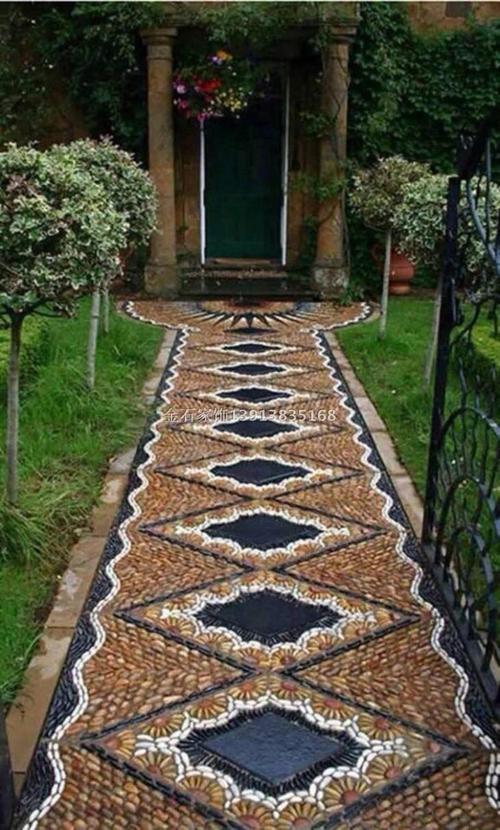
A Walk Through Time: The Pebble Mosaic Paths of the Forbidden City's Imperial Garden
An Introduction to Imperial Tranquility
The Forbidden City, a majestic testament to China's imperial past, houses within its crimson walls not only grand palaces and solemn halls but also a haven of natural beauty – the Imperial Garden. At the heart of this serene oasis, meandering through meticulously crafted landscapes, lie the pebble mosaic paths, a testament to the artistry and symbolism deeply embedded in Chinese culture.
The Art of Pebble Mosaics: A Fusion of Nature and Skill
Crafted from countless smooth, colorful pebbles, these paths are not mere walkways but intricate mosaics depicting a rich tapestry of patterns and imagery. Skilled artisans, through meticulous planning and placement, transformed simple stones into captivating works of art.
-
Variety in Every Stone: The pebbles, sourced from riverbeds across the empire, boast a vibrant array of colors and textures. Each stone, carefully selected, contributes to the overall composition, its unique shape and hue playing a vital role in the larger design.
-
Enduring Beauty: Bound together by a mortar of lime and sand, these mosaics have withstood centuries of foot traffic and weather. Their resilience speaks volumes about the craftsmanship of their creators and the enduring nature of this art form.
Symbolism Underfoot: A Deeper Meaning
Every element within the Imperial Garden, including the pebble mosaic paths, carries symbolic weight. These paths, beyond their aesthetic appeal, offer a glimpse into the philosophical and spiritual beliefs held dear by the imperial court.
-
Auspicious Patterns: Swirling clouds, stylized waves, and intricate floral motifs adorn the paths. These patterns, far from being mere decoration, symbolize auspicious concepts such as good fortune, longevity, and harmony with nature.
-
A Journey of Reflection: Walking these paths wasn't merely a physical act but an opportunity for contemplation. The rhythmic patterns, the feel of smooth stones beneath one's feet, and the surrounding beauty encouraged introspection and a mindful appreciation of nature.
Preserving Legacy: The Pebble Mosaics Today
These paths, having witnessed centuries of history, stand as a testament to the artistry and cultural richness of China's imperial past. Today, they are carefully preserved, a source of endless fascination for visitors from around the globe.
-
Restoration Efforts: Dedicated teams work diligently to conserve these intricate mosaics, ensuring that future generations can marvel at their beauty and craftsmanship.
-
A Window into the Past: For modern visitors, strolling along these paths is akin to stepping back in time. It's an opportunity to connect with history, to appreciate the artistry of a bygone era, and to ponder the stories these stones could tell.
Q&A
Q: What is the significance of the different colors used in the pebble mosaics? A: While specific meanings can vary, colors often hold symbolic meaning in Chinese culture. For example, red signifies good fortune and happiness, while yellow, the color of the emperor, represents power and prosperity.
Q: How long did it take to create these intricate pebble mosaic paths? A: While the exact time frame remains unknown, the meticulous planning, sourcing of materials, and skilled craftsmanship involved suggest that creating these paths would have been a monumental undertaking spanning several years and involving countless artisans.
Q: Are there any legends or stories associated with the pebble mosaic paths of the Imperial Garden? A: While specific legends directly linked to the paths might not be readily available, the Imperial Garden, as a whole, is steeped in history and folklore. It's not difficult to imagine emperors and their consorts strolling these paths, lost in conversation, or poets finding inspiration in the surrounding beauty, their stories becoming intertwined with the very essence of the garden.